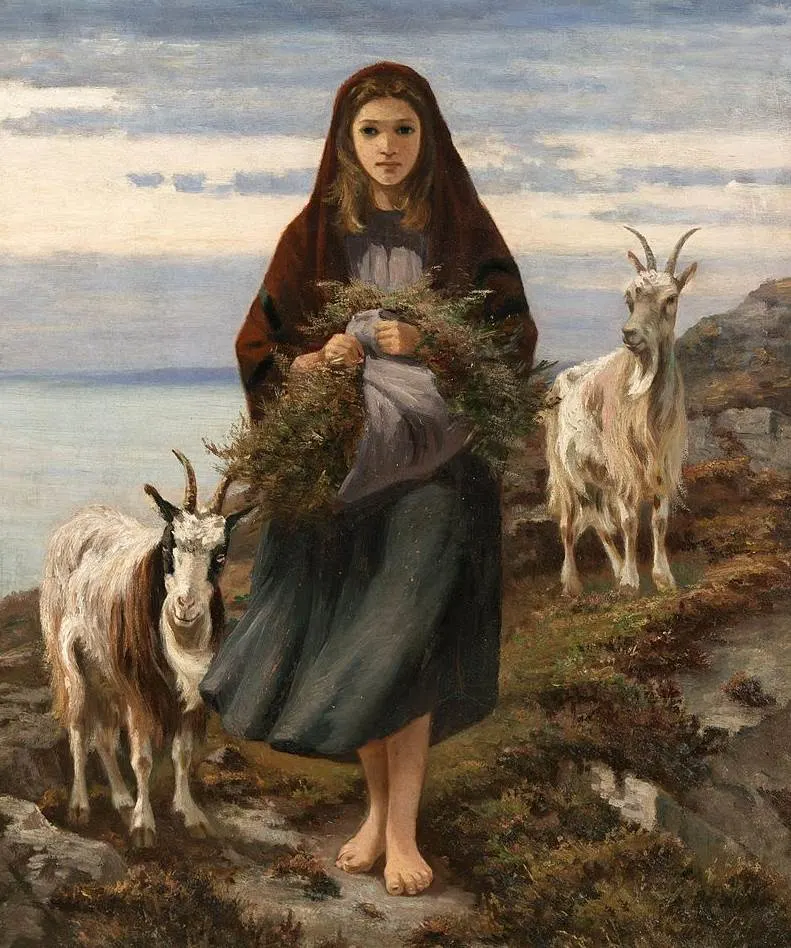A railway magnate and engineer offered to display his collection of art during an important event in Dublin in the early 1850s.
The popularity of this section of the 1853 Great Industrial Exhibition in the backyard of Leinster House was immense. So much so that it was decided to establish a permanent public art collection.
A lawyer named John Edward Pigot (1822–1871) was the main figure in establishing the museum in 1854 and it first opened its doors to the public in 1864.
The National Gallery of Ireland building looks very similar to that of the National Museum of Ireland. This museum focuses on Irish history and is located just south of it in central Dublin.
The collection started with just 112 paintings but has been constantly expanded during the 19th, 20th, and 21st centuries. The most recent expansion of the building was the Millennium Wing which opened in 2002.
Today, it features an extensive collection of both Irish and European painters. In this article, you’ll discover some of the most famous paintings at the National Gallery of Ireland.
1. The Taking of Christ – Caravaggio
- Date created:
- Dimensions:
The Taking of Christ is a painting by Caravaggio that depicts the arrest of Christ shortly after the last Supper. It’s one of the most important moments in the Passion of Christ, the events that lead up to Jesus’ crucifixion and resurrection according to both the Old and Ne Testaments.
Michelangelo Meris da Caravaggio (1571-1610) was a master of chiaroscuro, the use of light and shadow. He showcased his talent in this remarkable work of art by integrating two light sources that highlight the figures and elements. The man holding the chandelier on the right is believed to be a self-portrait of the artist.

2. Sts Cosmas and Damian and their Brothers surviving the Stake – Fra Angelico
- Date created: 1439-1442
- Dimensions: 37 x 46 centimeters (14.5 x 18.1 inches)
Sts Cosmas and Damian and their Brothers surviving the Stake is a remarkable work of art by Fra Angelico (1395-1455), an Italian artist from the Early Renaissance. Although he’s mainly known for his frescoes in Florence, he also produced a large number of panel paintings including this tempera and gold leaf work.

This scene depicts one of the tortures endured by 5 brothers from Asia Minor during the Christian persecution of Emperor Diocletian. The 5 Christians were burned at the stake but miraculously survived. It was in vain because the Roman Emperor had them all beheaded after a series of brutal tortures.

3. Lady Writing a Letter with her Maid – Johannes Vermeer
- Date created: 1670-1671
- Dimensions: 71.1 × 60.5 centimeters (28 × 23.8 inches)
Lady Writing a Letter with her Maid is a painting by Johannes Vermeer which exemplifies the artist’s oeuvre. Most of his paintings take place in the Dutch master’s own house and many of the objects we can see here are recurring items. This includes paintings on the wall, a curtain, and a rug on the table.
The painting was completed in the early 1670s which means it was one of the final works by Johannes Vermeer (1632-1675). He died just 5 years later during a time of financial trouble and war which marked the end of the Dutch Golden Age. It’s one of his paintings in which he experiments with a composition that moves away from the center.

4. Christ in the House of Martha and Mary – Brueghel and Rubens
- Date created: 1628
- Dimensions: 64 × 61.9 centimeters (25.1 × 24.3 inches)
Christ in the House of Martha and Mary is a painting that was most probably a collaborative effort of two renowned Flemish painters. Jan Brueghel the Younger, the son of Jan Brueghel the Elder, has been credited with painting the landscape and animals and Peter Paul Rubens painted the figures.
When his father died, Brueghel the Younger took over the family’s workshop. This painting depicts the popular story of Jesus Christ who visited sisters Mary and Martha. When Martha became upset when Mary stopped doing her domestic duties, Jesus replied that she had chosen wisely to listen to him instead.
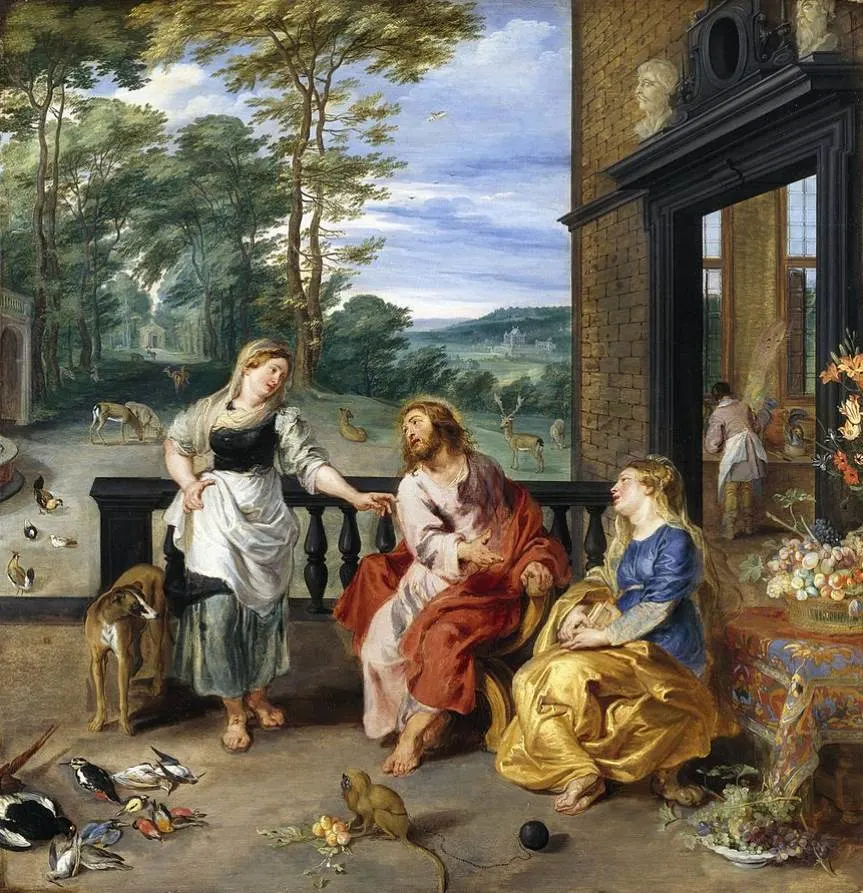
5. The Holy Family – Nicolas Poussin
- Date created: 1649
- Dimensions: 79 x 106 centimeters (31.1 x 41.7 inches)
The Holy family is a painting by Poussin that is also known as “The Holy Family with Saints Anne, Elizabeth, and John the Baptist.” Nicolas Poussin (1594-1665) was a French artist who lived and worked most of his life in Rome and who adopted a classical approach to his paintings.
It’s one of several variations of the same subject by the Baroque master. Another version is part of the collection of the Getty Museum in Los Angeles. The painting is dominated by the main figures in the foreground. In the background, we can see a typical 17th-century Italian landscape.
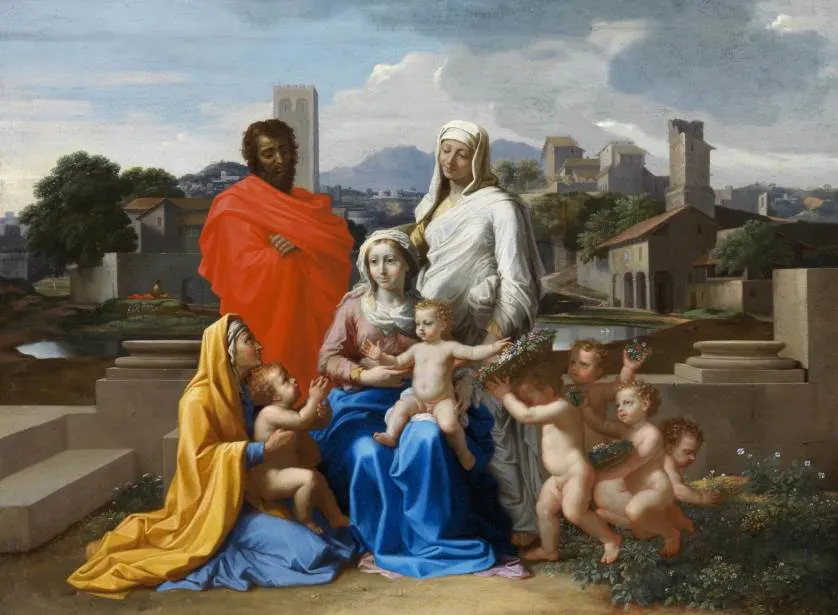
6. St Peter finding the Tribute Money – Peter Paul Rubens
- Date created: 1617-1618
- Dimensions: 199.4 x 218.8 centimeters (78.5 x 86.14 inches)
St Peter finding the Tribute Money is a painting by Peter Paul Rubens, one of the most important artists of the first half of the 17th century. His paintings defined Baroque art and his relations with courts all around Europe allowed him to build a very successful workshop in his native Antwerp.
The painting depicts a remarkable story described in the Gospel of Matthew. When Petr was asked whether or not Jesus paid temple tax he replied to go to the lake, open the mouth of a fish, and the money would be there. The fisherman’s guild of Antwerp likely commissioned this work.
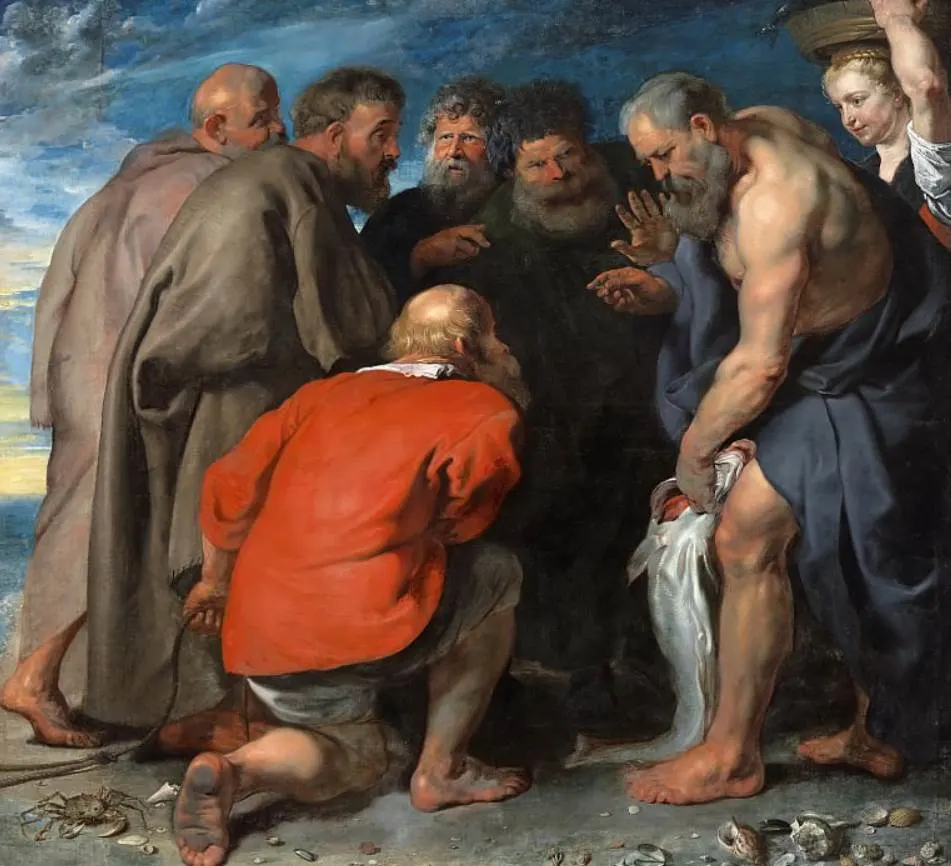
7. The Cottage Girl – Thomas Gainsborough
- Date created: 1785
- Dimensions: 174 x 124.5 centimeters (68.5 x 49 inches)
The Cottage Girl is a painting by Gainsborough that depicts a poor girl standing in a rural landscape while holding a dog and a broken pitcher. Thomas Gainsborough (1727-1788) made a living by painting members of the upper classes in Bath and London so this makes it a remarkable work in his oeuvre.
The English artist never really liked painting portraits of aristocrats and very much enjoyed painting landscapes. He never really got to this point that he could simply paint for his amusement until the 1780s. This is one of the many paintings that depict children living in rural areas during this period.

8. Dublin Streets: a Vendor of Books – Walter Osborne
- Date created: 1889
- Dimensions: 80 x 90 centimeters (31.49 x 35.43 inches)
Dublin Streets: a Vendor of Books is a painting by Walter Osborne (1859-1903), an Irish artist who adopted Impressionist painting in the 19th century. His preferred subject matter was working-class people who were living in Dublin during this period in history.
This painting depicts a scene at Aston Quay and depicts a stall that sells books. This was a popular area for poor people for stall holders to sell their stuff. It’s one of many paintings depicting scenes in Dublin with an emphasis on the living conditions of poor people. The barefoot girl in the foreground stresses this.
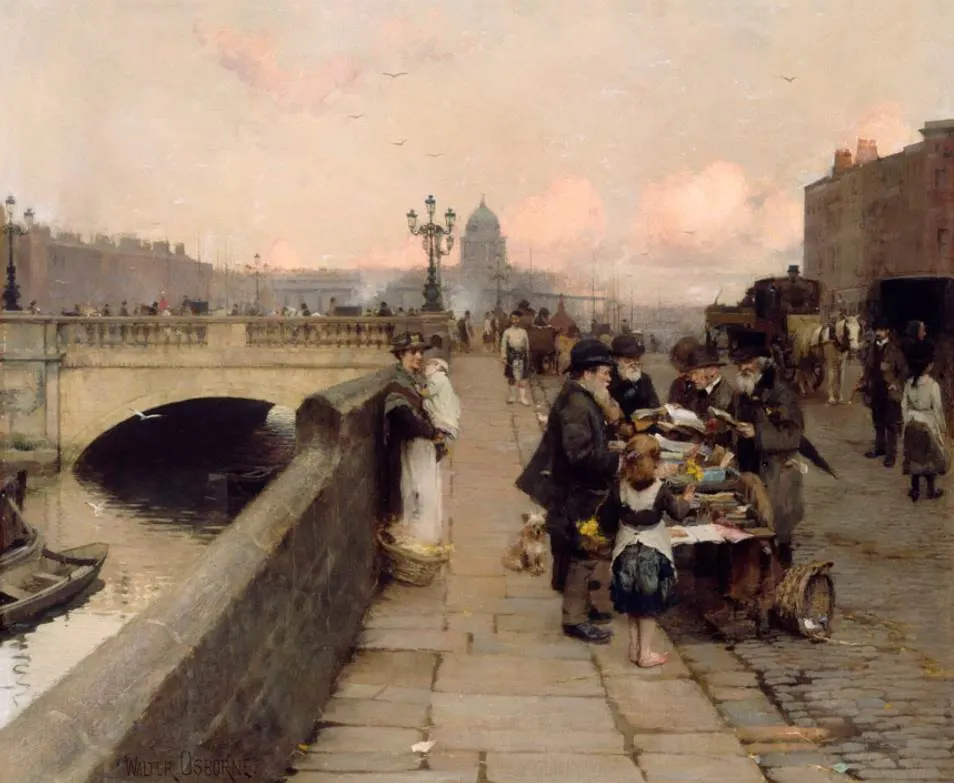
9. The Marriage of Strongbow and Aoife – Daniel Maclise
- Date created: 1854
- Dimensions: 315 x 513 centimeters (10.3 x 16.8 feet)
The Marriage of Strongbow and Aoife is a monumental painting by Daniel Maclise, an Irish artist who lived and worked most of his life in London. It depicts the marriage between Norman knight Richard de Clare, 2nd Earl of Pembroke also known as “Strongbow,” and the Irish Princess Aoife Ní Diarmait.
The exaggerated scene emphasizes the importance of this marriage in Irish history. It took place at Christ Church Cathedral, Waterford, in 1170. It’s a pivotal moment during the Norman Conquest of Ireland in the 12th century and the painting is an allegory of the end of Gaelic Ireland.

10. A Connemara Girl – Augustus Nicholas Burke
- Date created: the early 1870s
- Dimensions: 63 x 48 centimeters (24.8 x 18.8 inches)
A Connemara Girl is a painting by Augustus Nicholas Burke (1838-1891), an Irish artist who painted both landscapes and portraits. The painting depicts a girl from the Connemara region of western Ireland who is wearing a traditional outfit while carrying a bundle of sticks.
This work is one of the best-recognized paintings in Irish history. Despite its relatively small size and simple subject matter, it’s one of the most popular paintings at the National Gallery of Ireland as well. Burke was a native of Connemara so it evoked a sense of nostalgia for the artist himself as well.
